Second Lieutenant Leroy Edgar Jacobson
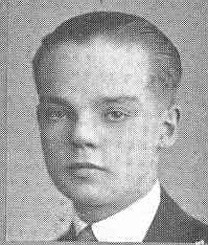
- Unit: 1st Infantry Division, 16th Infantry Regiment, Company E
- Service Number: O-1323574
- Date of Birth: March 25, 1910
- Entered the Military: October 23, 1942
- Date of Death: June 6, 1944
- Hometown: Vancouver, British Columbia and Seattle
- Place of Death: Omaha Beach, Normandy, France
- Award(s): Purple Heart
- Cemetery: Plot G, Row 22, Grave 28. Normandy American Cemetery, Colleville-sur-Mer, France
Mentored by Mr. Nicholas Coddington
Charles Wright Academy
2013-2014
Early Life
Leroy E. Jacobson was born in Vancouver, British Columbia, Canada, but fought for the United States, which became his home and where he planned to continue his life after the war. Not much is known about his upbringing due to his immigrant status.
Leroy Jacobson attended Queen Anne High School in Seattle until 1928. The 1930 census shows him living in Seattle with an aunt and uncle, Edward and Lauretta Hudson. He attended the University of Washington for three years before the Great Depression struck. He was a member of the Theta Delta Chi fraternity. He worked as a crew member on ships, traveling to Tokyo even into the latter part of the 1930s.
On October 22, 1937, he married Mary Isabella Uglum, and the 1940 census shows the couple living in Seattle and Jacobson working as an accountant for the railroad.
Leroy Jacobson enlisted in the U.S. Army on October 23, 1942. Despite being injured during training, Jacobson refused to be discharged. His wife, who later destroyed all photographs of him because of the pain they brought forth, drove to San Diego from Seattle to nurse him back to health.
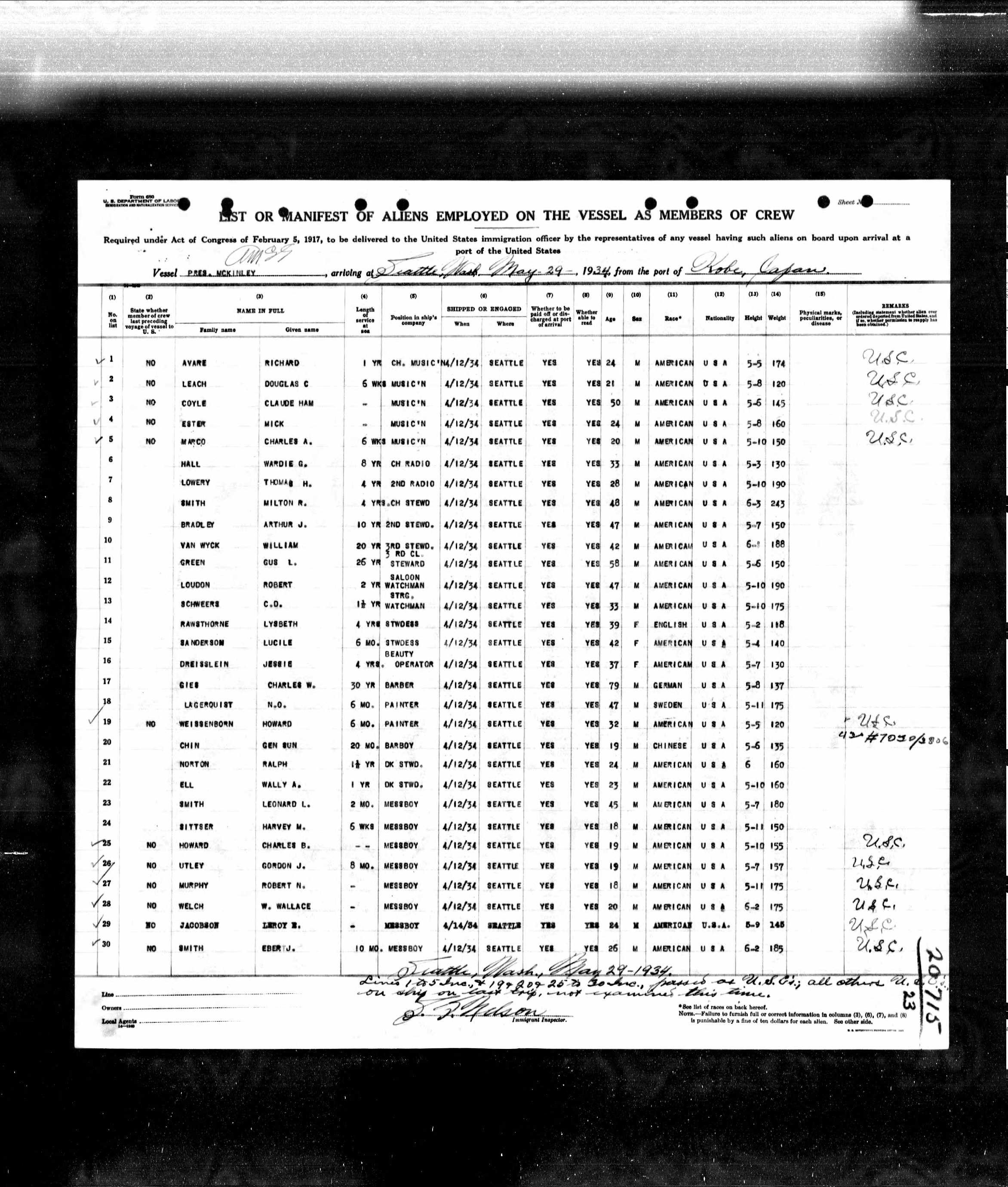
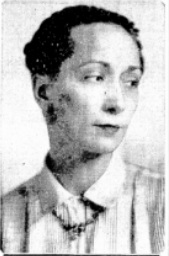
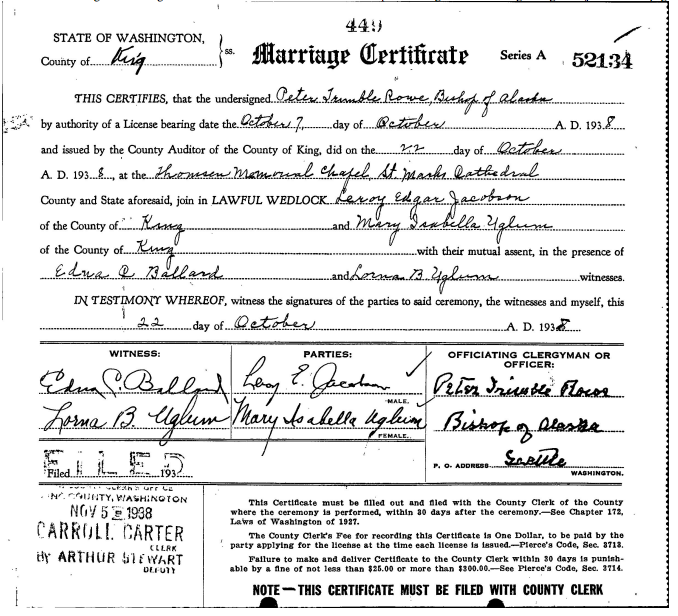
Homefront
Washington state flourished during the Second World War. It was a time of booming industry but also a time marked by unfortunate cultural implications. World War II’s lasting influence can still be seen throughout the state today, as many of the products are still produced here.
Boeing
Boeing’s planes became a symbol of American airpower during World War II and helped Allied forces guarantee victory. Boeing produced close to 28 percent of America’s aircraft manufacturing during the war. Boeing built more than 98,000 aircraft, including the B-17 “Flying Fortress.”
Hanford
Hanford, Washington became the site of the top-secret Manhattan Project that produced plutonium. By the middle of 1945, Hanford had produced enough plutonium for an atomic bomb called “Fat Man.” That bomb was dropped over Nagasaki, Japan, in August 1945. World War II ended days later.
Tacoma Shipyards
Thirty-three thousand men and women built dozens of freighters, escort carriers, and destroyers for the U.S. Navy during World War II.
Military Bases
Paine Field, Fort Lewis, Sand Point Naval Air Station, and Whidbey Island Naval Air Station are just a few of the military bases in operation throughout the Puget Sound region. The bases drew hundreds of families from throughout the country and helped fuel businesses in Tacoma, Bremerton, and Seattle.
Japanese Internment
Japanese-Americans were interned at camps away from Puget Sound during World War II. Following the 1941 attack on Pearl Harbor, President Franklin Roosevelt authorized the removal of 110,000 Japanese immigrants and ethnic Japanese citizens from the West Coast to internment camps inland, relocating 7,000 people from the Seattle area alone. In 1944, the government began drafting interned Japanese American citizens for the war effort.
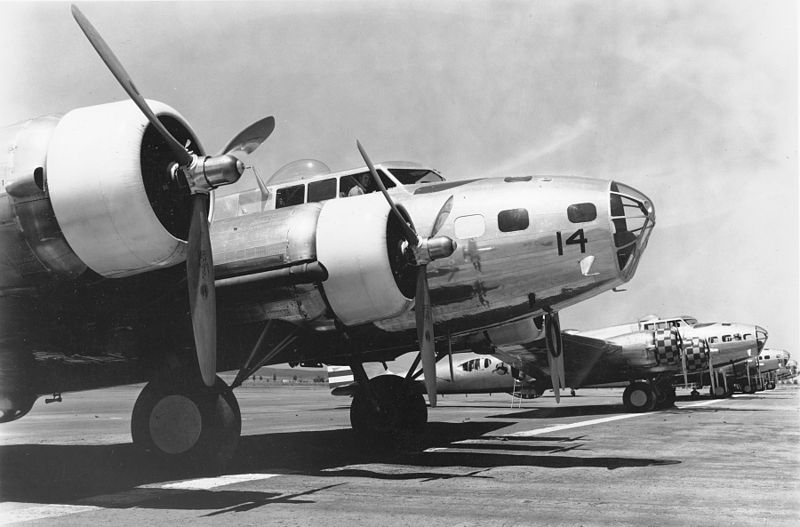

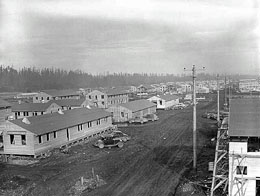
Military Experience
After tricking the enemy into believing they would invade at Calais, the more convenient location, the Allies prepared to attack at Normandy. The weather was an issue, and thus the mission was postponed by one day. The plan was for the American troops to land at Omaha and Utah Beaches, the British forces at Sword and Gold Beaches, and the Canadians at Juno Beach. Omaha Beach was the most heavily defended.
“Lt. Leroy E. Jacobson landed on H plus 1 minute: 6:31am, on Omaha Beach June 6, 1944. As if this weren’t already the most unfavorable set of circumstances imaginable, E Company lost their radio communication and many of their weapons were jammed with sand.”After Action Report, National Archives and Records Administration
Lieutenant Leroy E. Jacobson landed at H plus 1 minute: 6:31 a.m., on Omaha Beach June 6, 1944, one minute after the initial attack. His company, E Company, lost their radio communication, and many of their weapons were jammed with sand. Some boats sank, some men drowned, and others saw many of their men killed by the enemy or friendly, fire. We still do not know what exactly happened to Lieutenant Jacobson. We know what matters, and as a platoon leader, he encouraged his men to go on, even though he eventually could not.
His wife, Mary, gave birth to their son, Ed, three weeks after his father was killed.


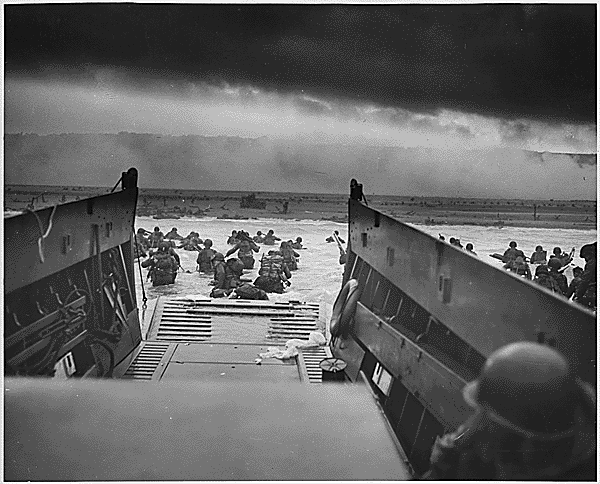
Eulogy
Lieutenant Leroy E. Jacobson was once just a name to me, and I am so glad that he is now so much more in my eyes. However, it makes me sad to know there are so many men like Jacobson who remain silent heroes who deserve recognition. But this is a start. I feel as though through this program, I have come to know Jacobson, which is bittersweet; something I’m sure everyone has experienced as well.
Jacobson was born in Canada but fought for the United States, which became his home and where he planned to continue his life after the war. Not much is known about his upbringing due to his immigrant status. Still, He attended the University of Washington for three years before the Great Depression struck, and he enlisted in the Army shortly after Pearl Harbor. Despite being injured, Jacobson refused to be discharged. Absolutely nothing would stop Jacobson from fighting for our country and our world.
He landed on H plus 1 minute: 6:31 a.m., on Omaha Beach, June 6, 1944. As if this were not the most unfavorable set of circumstances imaginable, E Company lost their radio communication. We know what matters: he fought for a country that was not his first home, he stopped at nothing to do so, and as a platoon leader, encouraged his men to go on, even though he eventually could not.
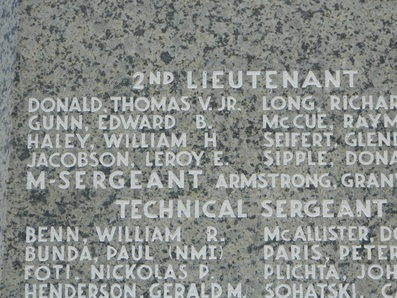
Bibliography
Primary Sources
After Action Report, 1st Infantry Division, 16th Infantry Regiment, Company E. 1944. National Archives and Records Administration.
Boeing B-17B. Photograph. 1941. National Museum of the United States Air Force. www.nationalmuseum.af.mil/Upcoming/Photos/igphoto/2000572033/.
[Construction at Fort Lewis, Washington]. Photograph. January 8, 1941. Lewis Army Museum. www.historylink.org/File/9899.
First Wave Landings. Map. U.S. Army Center of Military History. history.army.mil/books/wwii/100-11/map05.jpg.
Hemingway, Ernest. Voyage to Victory: An Eyewitness Report of the Battle for a Normandy Beachhead. New York: Collier’s, 1944.
“Into the Jaws of Death…” Photograph. June 6, 1944. National Archives and Records Administration (195515). catalog.archives.gov/id/195515.
Leroy E. Jacobson. Washington, Arriving and Departing Passenger Crew Lists, 1882-1965. Digital Images. ancestry.com.
Leroy E. Jacobson. World War II Army Enlistment Records, 1938-1946. ancestry.com.
Leroy Edgar Jacobson. World War II Draft Cards, Young Men, 1940-1947. Digital Images. ancestry.com.
Leroy Edgar Jacobson and Mary Isabelle Uglum. Washington Marriage Records, 1854-2013. Digital Images. ancestry.com.
Mary Isabella Uglum. Declaration of Intention. U.S. Naturalization Records, 1840-1957. Digital Images. ancestry.com.
[Photographs of Japanese internment at Bainbridge Island, Washington.] Photographs. Bainbridge Island Japanese American Exclusion Memorial. bijaema.org/history-2/.
Pyle, Ernie. Brave Men. Lincoln: University of Nebraska Press, 2001.
Tyee Yearbook. 1932. Digital Collections, University of Washington.
Washington. King County. 1930 U.S. Federal Census. Digital Images. ancestry.com.
Washington. King County. 1940 U.S. Federal Census. Digital Images. ancestry.com.
Secondary Sources
Ambrose, Stephen E. Band of Brothers: E Company, 506th Regiment, 101st Airborne from Normandy to Hitler’s Eagle’s Nest. New York: Simon & Schuster, 2001.
Ambrose, Stephen E. “Eisenhower, the Intelligence Community, and the D-Day Invasion.” The Wisconsin Magazine of History (Summer 1981), 261-277.
“The Boeing Story.” The National WWII Museum. Accessed August 10, 2014. www.nationalww2museum.org/us-freedom-pavilion-the-boeing-center/the-boeing-story.html.
Bradshear, Greg. “Monuments Men and Nazi Treasures.” Prologue (Summer 2013), 12-21.
Eisenhower, Dwight D. Crusade in Europe. Baltimore: Johns Hopkins University Press, 1997.
Gilbert, Martin. The Second World War: A Complete History. New York: Holt, 1989.
Kershaw, Alex. The Bedford Boys: One American Town’s Ultimate D-Day Sacrifice. Cambridge: Da Capo Press, 2003.
Mauldin, Bill. Up Front. New York: W. W. Norton & Company, 2000.
Stokesbury, James L. A Short History of World War II. New York: Harper, 1980.
Terkel, Studs. “The Good War:” An Oral History of World War II. New York: The New Press, 1984.
Warren, James R. “World War II Home Front on Puget Sound.” HistoryLink.org. Updated September 13, 1999. Accessed August 10, 2014. www.historylink.org/index.cfm?DisplayPage=output.cfm&file_id=1664.
Wieviorka, Olivier. Normandy: The Landings to the Liberation of Paris. Cambridge: Harvard University, 2008.
Ziezulewicz, Geoff. “1st Infantry Division Led Assault on D-Day.” Stars and Stripes, August 28, 2006. www.stripes.com/news/1st-infantry-division-led-assault-on-d-day-1.53474#.

